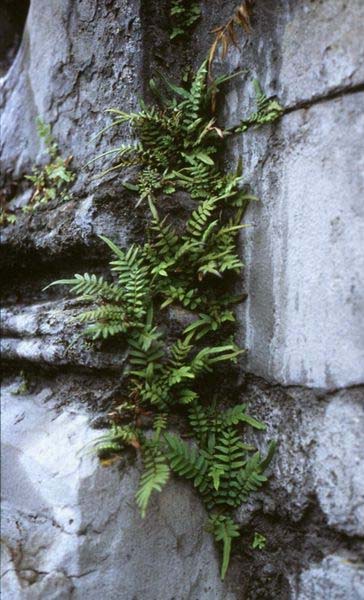Contamination, Pollution and Quality
Application of Composite Correction Program for improvement in efficiency of water treatment plants - A WHO paper
Posted on 20 Apr, 2011 12:41 AMThe goal of safe and affordable drinking water and sanitation has not yet been achieved. The current practices of water purification are inadequate to produce secured water supply. Maintaining health protection at water supply systems has become more challenging with resistance of some pathogens to disinfection using chlorination and an increase in the immuno-compromised population (e.g., people with HIV, organ transplant patients, the elderly).
In this context, it has become essential to develop various tools such as Composite Correction Programme (CCP) and Water Safety Plans (WSP) to improve water purification and distribution systems, to achieve the goal of providing safe drinking water.
Assessing acute Gastroenteritis risks associated with water quality and sanitation in Hyderabad city - A paper by the Institute of Health Systems (IHS)
Posted on 19 Apr, 2011 11:35 PMThe quality of drinking water is a vital element of public health and well-being. The most effective means of consistently ensuring the safety of a drinking-water supply is through the use of a comprehensive risk assessment and risk management approach that encompasses all steps in water supply from catchment to consumer.
WHO guidelines on water quality term these approaches as water safety plans (WSPs), developed to organize, systematize and apply management practices in drinking-water quality.
Vedanta’s red mud pond leaks into Vamsadhara river, Lanjigarh, Orissa - A Down To Earth report
Posted on 18 Apr, 2011 05:23 PMThis happened following a thunder burst on April 5.
According to Mahammad Ashlam of KBK Samachar, the local news agency, the downpour lasted 45 minutes and resulted in a huge run-off of the toxic waste into nearby water bodies from a crack in the pond wall of the one-million-tone refinery. Red mud or bauxite residue is a waste product of the alumina manufacturing process.
CPCB announces awards scheme for writing books in Hindi about pollution control and environmental planning and management (2011)
Posted on 15 Apr, 2011 01:24 AMप्रदुषण नियंत्रण और पर्यावरण योजना एवं प्रबंधन से सम्बंधित विषयों पर हिंदी में मौलिक पुस्तक लेखन के लिए पुरस्कार योजना वर्ष - २०११
अधिक जानकारी के लिए, फाइल अटैचमेंट देखे:
Arsenic and chromium hyper-accumulation by an ecotype of Pteris vittata - Possibility of remediation of contaminated water and soil – A paper in Current Science
Posted on 14 Apr, 2011 08:04 PM This study by National Environmental Engineering Research Institute published in Current Science was carried out to identify Pteris vitta and test its hyper-accumulating properties. The plant is commonly known as the Ladder brake fern or Chinese brake fern plant in India, and had been reported elsewhere as an arsenic hyper-accumulator.
This study by National Environmental Engineering Research Institute published in Current Science was carried out to identify Pteris vitta and test its hyper-accumulating properties. The plant is commonly known as the Ladder brake fern or Chinese brake fern plant in India, and had been reported elsewhere as an arsenic hyper-accumulator.
.The remediation of arsenic and chromium contaminated soil and water has become an important environmental issue. It is in this context that the discovery of hyper-accumulator plant species, which have the unusual ability of accumulating metals such as arsenic (As), chromium (Cr), zinc (Zn), nickel (Ni) and copper (Cu) to very high concentrations, has further boosted technologies based on this property.
This is the first report of characterization of arsenic accumulation in an Indian ecotype (plant), which also shows chromium hyperaccumulation in addition to arsenic. Intact plantlets were grown in 20 per cent Hoagland solution amended with up to 200 mg arsenic or chromium medium. Plants absorbed and accumulated a significant amount of arsenic and chromium in their biomass with high bio-enrichment factor. Arsenic and chromium tolerance by spores and gametophytes under in-vitro was also assessed.
“Reddy” remedies - A look at the Satwant Reddy Committee report on the issue of pesticide residues in packaged drinking water and packaged natural mineral water - Article from Down to Earth magazine
Posted on 14 Apr, 2011 10:28 AMSatwant Reddy committee: Report of the committee on the pesticide residue in packaged drinking water and packaged natural mineral water.
Setting standards
Dissemination of NDM-1 positive bacteria in the New Delhi environment and its implications for human health - An environmental point prevalence study published in The Lancet Infectious Diseases (2011)
Posted on 13 Apr, 2011 03:15 PMPlasmid-encoding Carbapenemase-resistant Metallo-B-Lactamase (PCM or NDM-1) is an enzyme that makes bacteria resistant, not only to a broad range of antibiotics such as carbapenems and other β-lactam, but also to multiple other antibiotic classes, leaving very few treatment options available, when a person gets infected with such bacteria.
Bio-remediation project announced for Buddha Nala, Ludhiana - MoEF Press release
Posted on 13 Apr, 2011 11:14 AMFollowing the invitation of Member of Parliament (Ludhiana) Mr. Manish Tewari, the Hon’ble Minister for Environment and Forests Mr. Jairam Ramesh along with officials of the Ministry of Environment and Forests including the Chairman of the Central Pollution Control Board, visited the site of the Buddha Nala in Ludhiana, Punjab in September of 2010.





